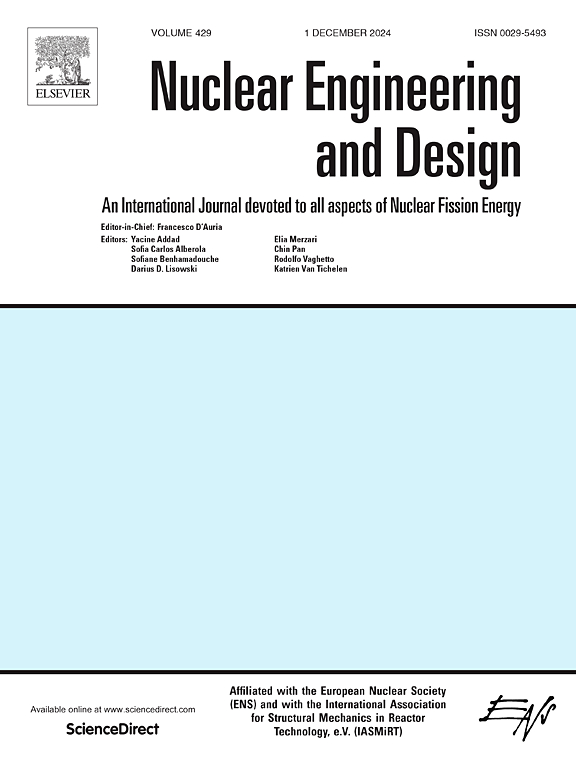Regression algorithm-based prediction of burnup history in pebble-bed high-temperature reactors
IF 1.9
3区 工程技术
Q1 NUCLEAR SCIENCE & TECHNOLOGY
引用次数: 0
Abstract
The pebble-bed high-temperature reactor operates with continuous refueling, featuring a vast number of fuel spheres within the core that are challenging to locate and track, leading to an unknown burnup history of the nuclear fuel. This poses difficulties for nuclear material accounting, source term analysis, and the establishment of experimental benchmarks in pebble-bed high-temperature reactors. Currently, the online burnup measurement system in HTR-PM can measure the activity of radioactive nuclides, which are highly correlated with the burnup history and can be utilized to construct the loss function in burnup history inversion.
To reliably provide anticipated optimal solutions, this paper conducts an in-depth study on the construction of the above loss function through regression on a large dataset for burnup history prediction. The following three aspects of work are undertaken: 1) Simulating the core pebble flow using a discrete element model, simplifying the burnup history into an irradiation history sequence that includes neutron flux rates and irradiation durations, and demonstrating the rationality of this simplification; 2) Utilizing the above irradiation history sequence as input into a nuclear inventory software to generate a substantial dataset of known burnup histories and nuclide activities. Constructing weighted regression and deep neural network models, with online measurable nuclides as input data and fuel sphere burnup history as output data, to quantify the data potential of solving the burnup history from online measurable nuclides and to evaluate the contribution of different nuclides to the solution; 3) Analyzing the contribution to the solution of online measurable nuclides from the perspectives of burnup chains and nuclide characteristics, and establishing criteria for selecting input data for the burnup history prediction model.
The research outcomes of this paper represent a crucial step in predicting the burnup history of pebble-bed high-temperature reactors, achieving a mathematical description of the high-amplitude, high-frequency variations in fuel sphere burnup history. This paper also provides the computational limits of regression models for burnup history based on online measurable nuclides and conducts a detailed analysis of the contribution of input data to the solution, breaking through the bottleneck of unknown burnup history of fuel spheres in pebble-bed high-temperature reactors.
求助全文
约1分钟内获得全文
求助全文
来源期刊

Nuclear Engineering and Design
工程技术-核科学技术
CiteScore
3.40
自引率
11.80%
发文量
377
审稿时长
5 months
期刊介绍:
Nuclear Engineering and Design covers the wide range of disciplines involved in the engineering, design, safety and construction of nuclear fission reactors. The Editors welcome papers both on applied and innovative aspects and developments in nuclear science and technology.
Fundamentals of Reactor Design include:
• Thermal-Hydraulics and Core Physics
• Safety Analysis, Risk Assessment (PSA)
• Structural and Mechanical Engineering
• Materials Science
• Fuel Behavior and Design
• Structural Plant Design
• Engineering of Reactor Components
• Experiments
Aspects beyond fundamentals of Reactor Design covered:
• Accident Mitigation Measures
• Reactor Control Systems
• Licensing Issues
• Safeguard Engineering
• Economy of Plants
• Reprocessing / Waste Disposal
• Applications of Nuclear Energy
• Maintenance
• Decommissioning
Papers on new reactor ideas and developments (Generation IV reactors) such as inherently safe modular HTRs, High Performance LWRs/HWRs and LMFBs/GFR will be considered; Actinide Burners, Accelerator Driven Systems, Energy Amplifiers and other special designs of power and research reactors and their applications are also encouraged.
 求助内容:
求助内容: 应助结果提醒方式:
应助结果提醒方式:


